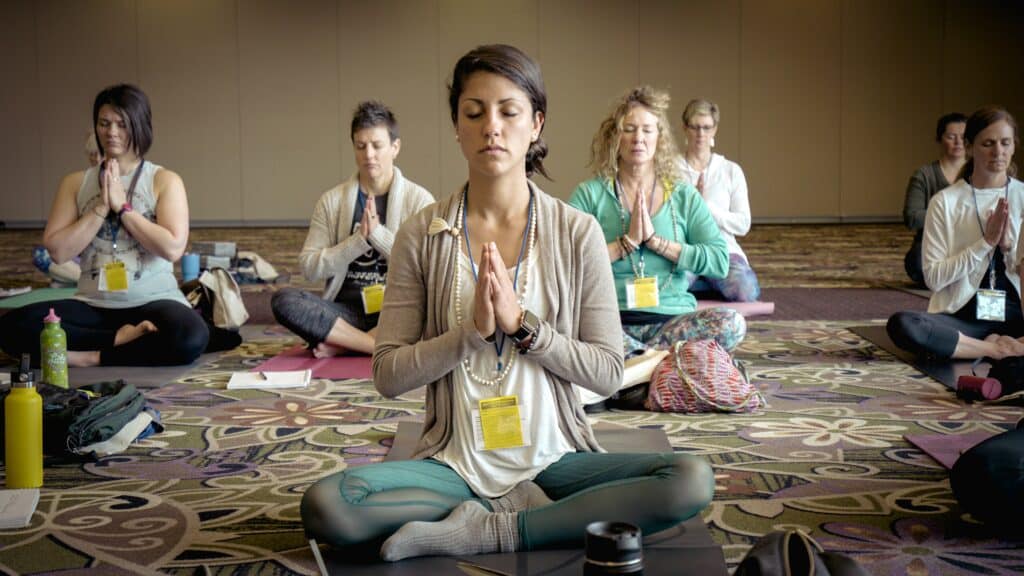World Health Day has been held annually on April 7th since 1948, marking a day to increase public awareness about a specific health topic of concern to people all over the world.
This year, the focus is very much on the health of our planet and its people. The World Health Organisation (WHO) will direct global attention on urgent actions needed to keep humans and the planet healthy and foster a movement to create societies focused on well-being. In the HR world, this means companies should take the time to consider business initiatives that positively impact the interests of their employees. Here is our guide to World Health Day:
Importance of health

Promoting well-being in the workplace is integral to reducing stress and keeping employee engagement at an optimal level. When people are stressed or burned out, this can negatively affect their relationships with others, lead to a poorer performance and even cause more sick days. In fact, Public Health England released a study which found that every year in the UK, 131 million days are lost to sickness absence. The reality is that this figure could be greatly lessened by both business leaders and employees actively taking steps to safeguard their well-being.
How can employees help themselves
When it comes to health, everyone has a responsibility to take proactive control of their own well-being, especially employees. World Health Day serves as a prime opportunity for people to be reminded about what steps they can take themselves in support of their own mental and physical health. Below are a few ideas:
1. Self-care
It’s something we all need to think about – taking time out of our day to do something that will benefit us mentally and physically. Healthy habits are something that can be entirely tailored to the individual’s preferences but common practices include relaxation techniques like meditation and yoga, exercising and getting outside for some fresh air.

2. Establish boundaries
Remote working, rapidly becoming the new normal, has led for many to a more blurred work-life balance. The trigger that once prompted us to shut down the laptop and head home has been eliminated by not being in the physical workplace, causing people to work longer hours. Therefore, employees (and equally business leaders) should prevent overworking by establishing clear start and finish times for the working day.

3. Frequent breaks during the day
At a time when so many of us are continuing to work from home, it’s easy to get stuck in front of the computer and neglect taking breaks. When in the physical workplace, employees are more likely to take 5 minutes for a coffee break with colleagues or walk somewhere to get food on their lunch break. With both of these excuses eliminated in remote working, employees should still find time to leave their desks regularly; whether this be for a short brisk walk outside, taking the time to hydrate or even doing a daily task in the house.

4) Take annual leave
Annual leave represents one of the few opportunities employees really have to switch off and spend time away from work with loved ones. It’s a chance to refresh the mindset and return to work with a renewed perspective – employees must use up all their annual leave allowance and not be expected to answer phone calls or emails during this time.

5) Prioritise sleep
You shouldn’t need us to tell how much a good night’s sleep supports various brain functions like concentration and productivity. Everyone should sleep seven to nine hours every night and try to create a bedtime routine of going to bed and waking up at the same time. This will lead to a more optimistic and healthy workforce of employees who are ready to face the challenges of the day.

What employers can do
It’s imperative that employers set aside their assumptions about what they think their employees need and start listening to what their team’s expectations are. In our guide to World Health Day, here are just a few of the things workers can reasonably anticipate from their company:
- Job control. One of the most overlooked aspects of employee well-being is job control, that’s essentially the amount of ability employees have to determine what and how they carry out their job roles. Limited job control has a negative impact on the employee’s mental well-being and as a result, employers should think about creating roles with more autonomy. This could be achieved through initiatives like flexi-time which allows team members to tailor their hours to their individual preferences.
- Job expectations: When an employee is hired, it’s generally accepted that they’ll come into a clearly defined role with a firm understanding of what their job duties will be. CIPD research shows that by far the most common cause of stress at work is heavy workloads – as such, it’s a managers’ responsibility to ensure that the employee is not overloaded with extra tasks that may lead to burnout or other physical grievances.
- Positive and respectful workplace. Line managers have an obligation to lead by example when it comes to role modelling acceptable behaviour as well as monitoring and calling out anything unacceptable. Employees can expect a workplace they feel respected in, regardless of their gender, race, sexual orientation etc – this will once again prevent absenteeism and lead to employees who want to contribute to their company.
- Implement wellness programs. It’s fallen to HR departments to find new and innovative ways to safeguard employees’ well-being. One such way of doing this is by employers initiating wellness programs for example Virgin Incentives has provided free membership to Headspace. A team mindset training app, Headspace provides science-based mindfulness, movement and sleep support. In addition, employers should organise off-site well-being days where teams should be asked for their feedback, listened to and strengthen their bonds with each other.

Hopefully you found our guide to World Health Day useful. Interested in how we can help support your employees and provide fantastic wellness experiences? Contact us below:

